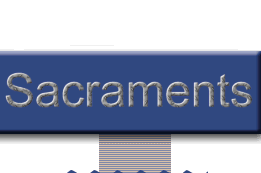



|
|
Overview |
|

![]()
Sacrament of Jesus.
"Be imitators of me, as I am of Christ."
St. Paul
Sting, in his song ‘All this Time’ from the Album The Soul Cages, speaks in a challenging way about the Church. He is critical of clergy ‘fussing and flapping in priestly black like a murder of crows’ and he prays ‘Father, if Jesus exists, then how come he never lived here?’
Jesus does exist and the question for the church today is to make Jesus present in the church in a way that is relevant for our world.
St. Paul felt able to say: ‘Be imitators of me, as I am of Christ’(1 Cor. 11:1). What an amazing statement! Jesus was able to say ‘To have seen me is to have seen the Father’. St. Paul is in a sense saying ‘To have seen me is to have seen Jesus". That is the challenge for Christians - to seek to be ‘sacraments of Jesus’, to be able to say ‘to have seen us is to have seen Jesus’. We have to do more than fuss and flap ‘in priestly black’. The Church needs to be more of a symbol that Jesus is alive, living with us.
St. Luke wrote two great books, his GOSPEL and the ACTS OF THE APOSTLES. The Gospel is the Acts of the Jesus who points us to God and life's meaning in the light of that God. The Acts of the Apostles recounts the acts of his disciples living "in memory of Jesus" pointing us to Jesus and his ‘way, truth and life’. Luke’s Gospel leads to Jerusalem and the command to take this Good News to ‘the ends of the earth’. The Acts of the Apostles leads to Rome, the centre, ‘the ends of the earth’, of the then known world. It speaks of the disciples acting as Jesus.
One could speak of a third ‘book’. It is the ‘Acts’ of our lives. The continuing work of God's saving grace is present in an on-going way through the people who live in memory of Jesus and in the power of his Spirit with a mission to move ‘to the ends of the earth’.
The Church, then, is the ‘Sacrament of Jesus’. Christ's faithful people point to Jesus, the Servant Leader who is the Living One who is amongst them. He is not ‘just’ a memory.
The early Christians were fairly small communities sharing a faith experience of this Living Servant leader. They were groups based around faith in the resurrection who initially proclaimed the Good News, the Gospel, by their lives. They were prophets in their world. They then wrote the parable stories of Jesus and the incidents in his life in the New Testament. As well as the Four Gospel accounts, his story was translated into the more abstract teaching of the letters of Paul, of Peter, of James and John and other writers of the New Testament.
The Story of Jesus came to be present also through the gathering of communities who lived by the words and actions of Jesus.
After the Resurrection and Ascension of Jesus and the Pentecost event these communities spread from Jerusalem. They were originally called ‘followers of the Way’ and then the name ‘Christians’ was used for the first time at Antioch. The missionary journeys of Paul and others led to the establishment of many communities in the first centuries after Jesus.
Later, these gradually evolved into groups or ‘families’ that were culturally, politically, geographically linked in a loose sort of way, and these ‘families’ composed rituals, liturgies to help them remember Jesus and to live in the power of his Spirit. Even though practices may have differed, and there was no real uniformity of expression, there was essential unity between the ‘families’.
The rituals of these groups continued to develop and change throughout the centuries. The shape of the sacraments and the rites was influenced by the peoples that heard the Gospel and who ‘translated’ its meaning into their ways and customs, their cultures.
Many elements from these very cultures have been integrated into the sacramental rites making it easier for the rituals to be accepted by a particular people. Some were based on very universal symbols. The purification rites of many people used the symbol of water, the double element of light and darkness were common across many cultures, the sacred springs of ancient Mother goddesses became the sacred places of Christians gathered in ‘Mother Church’.
Some would call these elements ‘impurities’ that crept into the rituals, yet we remember that Jesus spoke in the context of his Jewish cultural images. And really there is no other way! The use of cultural symbols is the only way to make the meaning of the Gospel story relevant for a particular people. A large number of the symbols, like light, water, touch, were transcultural and spoke of essential unity. This question of culture is very much alive today as we seek relevant expressions of ‘Church’ and our sacramental practice.
Tensions between the differing families of the Church are part of the history of our world. Attempts at imposed uniformity created tension and problems both for the Church as such and for sacramental practice. One effect has been that the Church as a symbol of unity was compromised and the expressions of her life in theology, including the understanding of sacraments, became a cause of dissent. The major disagreements that have split the unity of Christ's faithful and fragmented it into different, opposing ‘denominations’ are great tragedies and a scandal to our world.
The first major split was in the fifth century with the Council of Chalcedon (451 CE) defining the person of Jesus that was not accepted by some Eastern groups. Then in the eleventh century there was a split between the Western and Eastern political and religious worlds. This meant that the Roman (Latin) Church was split from the Greek Churches that had their birth from the ancient centers of Jerusalem, Antioch, Alexandria and Constantinople. Nevertheless the sacramental systems of East and West remained basically united. However, the Church as ‘Sacrament’ was disastrously split.
Then, in the sixteenth century, there was a major split in the Western, Roman Church that led to many differing western ‘denomination’, each with its own emphasis and expression.
Also, within this split, the sacramental system of the Roman Catholic Church was called into question by the Reformers and led to strong discussion and disagreement about the nature and number of Sacraments.
The idea of Jesus present in the Word was fundamental issue for the Reformers. They concentrated on the presence of Jesus communicated in the Word, the Catholic position emphasised the presence of Jesus communicated in Sacraments. These major insights had a great influence in defining sacraments and the Church.
There has been bitter argument and, now thankfully, dialogue between the differing positions. Uniformity is not sought, yet the essential unity of the community of Christ's faithful, hopefully, will become more of a reality in our times as we work for a future where the differing expressions of sacramental practice will be part of the respect flowing from that essential unity.
In our time, one of the things to be noted is that Christians are looking at the idea of Sacraments from a wider perspective. Sacramentality, broadly understood, gives a new meaning to the relationships and things of our lives.
So, whilst a lot of Western denominations of Christians rejected five of the traditional Sacraments, some still maintained a looser ‘sacramentality’ of their marriage rites, the ordination or commissioning of ministers, the rites of reconciliation, and healing rites.
The rest of this book will explore something of the "sacramentality" of the traditional seven sacraments, these intensive moments.
From its first days the Church has always had to deal with discord.
In these times there is a growing acknowledgement of the differing emphases. For example, the great contribution of the Reformers was to open up the richness of the Word to ordinary people. The contribution of the Roman Tradition was to keep alive the sacramental treasure of the Church. The role of the Holy Spirit is being re-discovered from its emphasis in the Orthodox tradition..
With on-going dialogue and conflict resolution the Church will be a better symbol of essential Gospel unity and Christ's faithful will live by an essential unity of sacramental expression.
Further Reading
Cooke, Bernard
Sacraments and Sacramentality.
(23rd Publications, Mystic Conn., 1983.) Revised edition 1994.
One of the best ‘all in one book’ treatments of sacramentality. Helpful discussion questions at the end of each chapter.
|
|
|
|


Copyright © Anthony Kain 2009